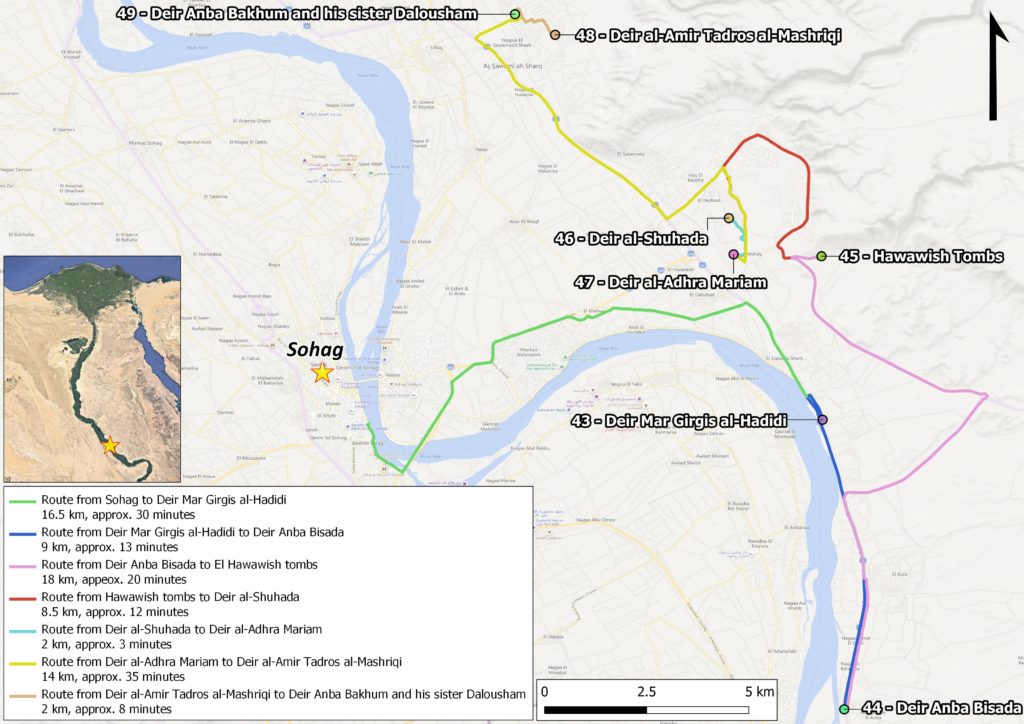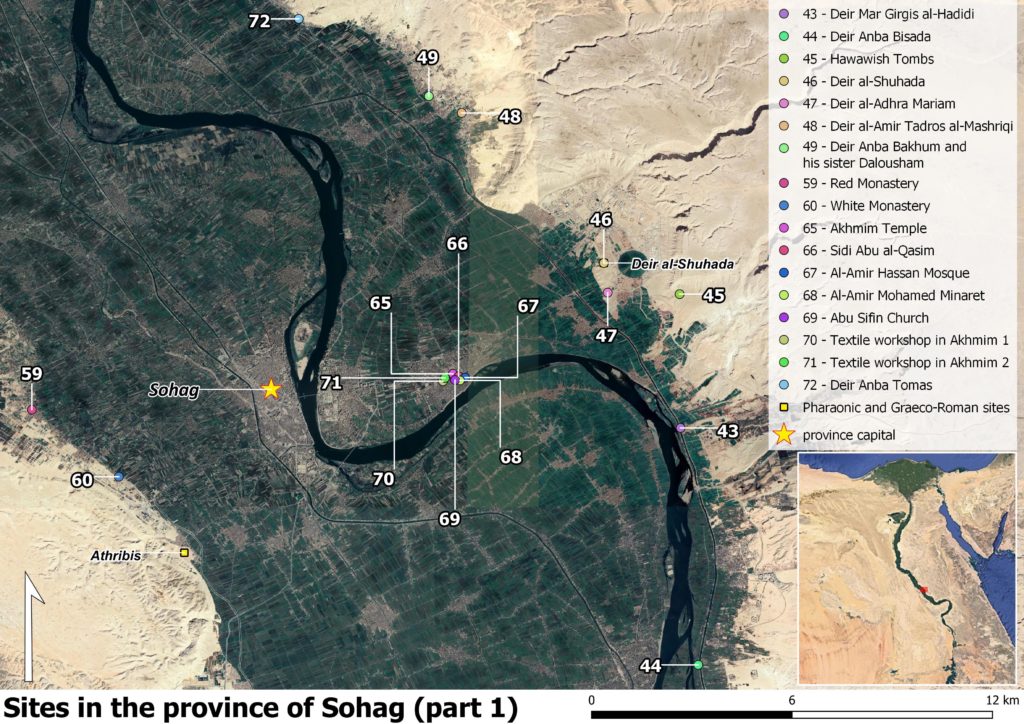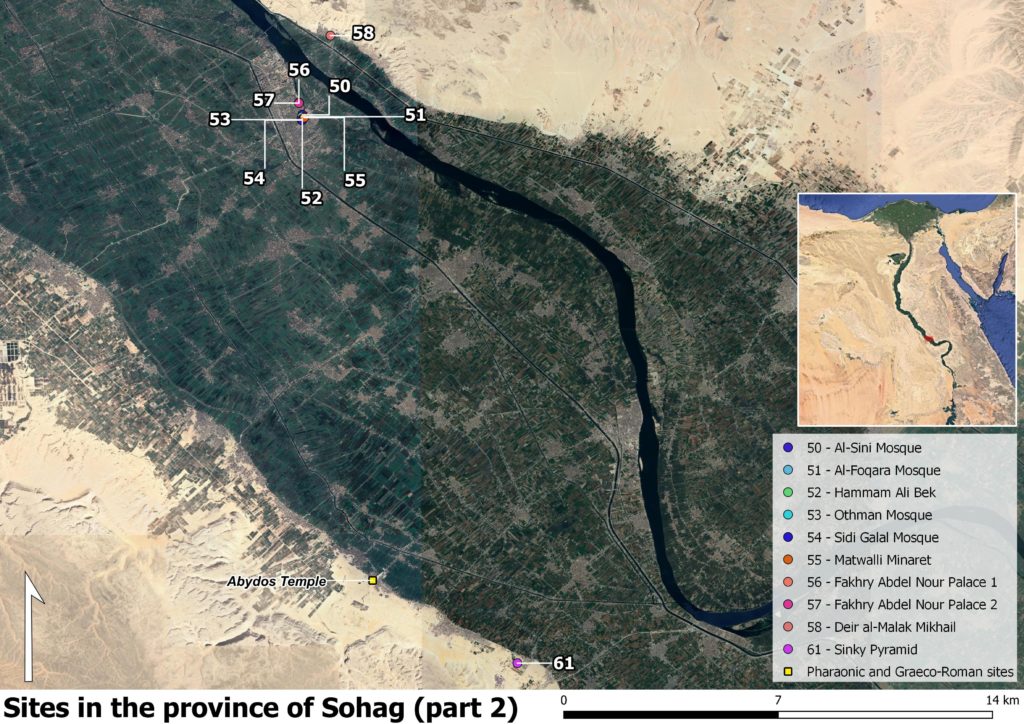Introduction
In 2012, the project’s PI started his first visits in different regions to gather historical data; thanks to the funds of the American Research Centre in Egypt, in 2021 a team was created, and further visits took place between 2021 and 2023. Photographic, architectural, geospatial, and local verbal data was gathered. As work on the publication takes longer, some of the data was collated and made available online through the project’s dedicated website; the data is free for researchers and the general public.
The ongoing documentary efforts carried out by the Regions in Flux project are collected on this website, where we provide information on lesser-known heritage sites to the public. The data on these sites has been gathered through touristic visits by researching archival files and observing satellite imagery. Based on the sites that we have seen, we suggest a series of cultural routes that can be helpful to travellers and students when planning their future trips.
The proposed routes intend to connect and promote main sites and advise about some of the unique cultural locations of each of Egypt’s regions. The intention is to make obscure archaeological and heritage sites more widely known. We reckon that the chances of lesser-known sites being visited and appreciated will increase if they are pinpointed on the map and promoted. We hope that Egyptian and foreign enthusiasts, students, tourists, and travellers will consult this online resource to learn about lesser famous heritage sites from different regions in Egypt. Access to this data will give the opportunity to extend knowledge beyond traditionally well-known sites.
Sample of regional maps
Sohag is indeed the pearl of Middle Egypt. The region is rich with heritage places that can be visited over six or seven days. It is not simply hosting the famous Red and White monasteries, Akhmim, a town renowned for its textile production and heritage houses, Abydos and the newly inaugurated Athribis (Shikh Hamad) temples. There are ten other monasteries, four historic mosques, and two minarets alongside other heritage palaces of much interest. In total, there are at least 32 heritage places of particular value that can attract the attention of both researchers and visitors. Most of these sites are endangered; visiting them might help their protection as it will increase their value. The private sector could potentially invest on the traditional products and distribute them within Egypt and abroad.

The following maps provide the location of the heritage places in the province of Sohag. The maps are intended to acquaint potential visitors with the location of the sites in relation to the cities of Sohag and Girga, denoting their proximity and accessibility. In addition, one map illustrates the project’s cultural route, which offers information on the distance (in km) between the sites and indicates the average amount of time it can take to drive from one site to the other. We hope that this logistical information will be of help to prospective visitors when planning their future trips.

